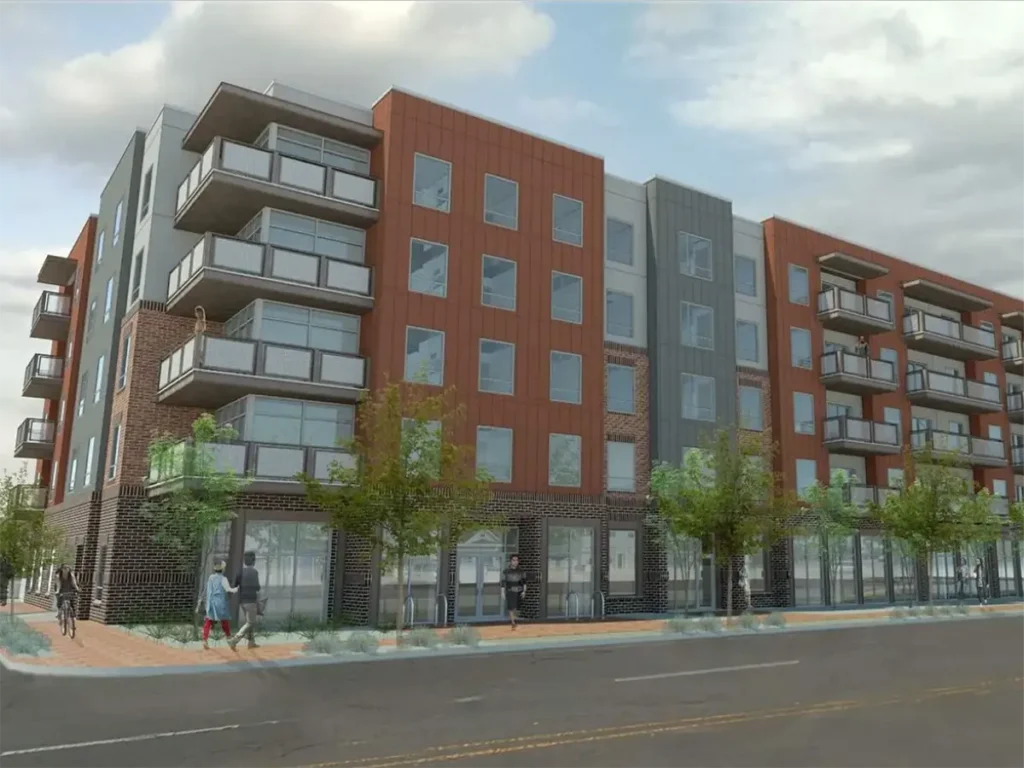By Denile Doyle (www.multihousingnews.com)
ESG mandates and new building codes are driving strong demand for this funding source.
Green Financing
Green finance has come a long way since Fannie Mae issued its first multifamily green bond in 2012. In today’s ESG-focused market, multifamily developers and owners are acknowledging the effects of climate change and turning toward the financial and operational rewards of green financing programs.
The GSE’s Green Bonds and Green Building Certification products offer fixed- and adjustable-rate loans and up to 80 percent loan-to-value. The Green Rewards program rewards borrowers for building improvements that achieve a 15 percent energy reduction and 30 percent total efficiencies with pricing incentives, although borrowers must submit annual energy usage reports.

According to its 2021 annual report, Fannie Mae’s green finance volume climbed 3.6 percent to $13.5 billion in 2021 from 13.0 billion in 2020. In December 2021, the agency also announced that its green MBS issuance had reached $100 billion, making Fannie Mae the first green bond issuer to reach that milestone. Fannie Mae’s Green Rewards and Green Building Certification products offer fixed- and adjustable-rate loans and up to 80 percent loan-to-value.
In 2021, the agency added BREEAM to the list of green assessment certifications it accepts as part of its Green Building Certification program. Multifamily borrowers with top-tier certifications (BREEAM, LEED, Passive House and others) are eligible for the best pricing and receive a 25-basis-point reduction. Less-robust certificates in lower categories yield lower rate reductions, but for long-term loans, even a 10- or 20-basis-point reduction is still beneficial.
The GSE programs are well suited for multifamily borrowers who “acquire an older vintage asset or want to refinance and put money back into an asset,” noted Greystone Director Phil Cathlina.
Greystone recently provided a non-recourse Fannie Mae DUS green loan, with a 10-year term and 9.5 years of yield maintenance, for a 406-unit property in Okemos, Mich. The owner used the $48 million loan proceeds to complete the acquisition and make renovations on the 1989-completed property.
But some GSE financing programs are not for the faint of heart. “Green Rewards requires that they escrow monies, (and) that takes a different level of commitment.” Noted Gary Pool, senior managing director & Fannie Mae platform co-leader at JLL. A borrower is required to escrow 125 percent of the costs estimated to complete those improvements.
Keeping Pace
Commercial Property Assessed Clean Energy, a policy-based program, is also gaining traction among borrowers seeking to reduce their carbon footprint. With C-PACE financing, borrowers can take out loans for sustainable upgrades and repay the loan as an assessment on their property tax bill. Repayments are remitted to the lender. Loans are not publicly funded and typically have terms of 10-plus years and up to 30 years.
“This allows building owners to match their financing with what they’re financing,” said Jessica Bailey, president & CEO of Nuveen Green Capital. She co-founded Greenworks Lending, which was acquired by Nuveen in 2021.
Borrowers looking to leverage 80 percent to 85 percent of their capital stack can typically get 25 percent to 30 percent financed through C-PACE, with between 50 percent and 55 percent from a senior lender, according to Shawn Heyl, founder & CEO of Green Pace Financial, a capital markets advisory firm based in San Diego.
Qualifying improvements range from building envelope to lighting to energy-efficient windows to green roofing to EV charging stations, as long as they improve the building’s energy consumption.

Pressure to Go Greener
As more states institute energy- and carbon-reduction requirements into building codes, developers are trying to get ahead. “There are more and more mandates coming down the pike in terms of energy consumption,” said Baily, noting she has seen a lot of activity in C-PACE financing for new construction.
Borrowers can take advantage of C-PACE financing for new development by completing upgrades above what building code requires, while benefiting from fixed-rate funding. “Mezzanine financing is very expensive, whereas our pricing for multifamily construction right now is around 5 percent with long-term amortization,” commented Heyl. “It makes us very attractive for construction,” commented Heyl.
C-PACE programs are typically funded through private lenders in compliance with state- and city-specific regulations. The program provides fully amortizing financing so owners can secure long-term and fixed-rate financing for their projects. Aside from financing 100 percent of projects, C-PACE can be retroactively applied to retrofits.
“What makes it even more exciting is that, in most cases, we can reach back up to three years and reimburse the developer for any construction costs that were applied to energy savings items and apply that to either reduction of debt or anything that helps the project,” said Heyl.
Shifting Priorities

The availability of C-PACE across states and jurisdictions is promising. Many senior lenders, both banks and debt funds, are skeptical with C-PACE because it takes priority over the mortgage. C-PACE financing takes priority over the senior lender. “The senior lender has to be comfortable because they ultimately have to give consent.” A lender won’t underwrite C-PACE if it’s going to overleverage the property, noted Bailey.
“We need more lenders who understand what PACE brings to the table,” observed Heyl. C-PACE is currently active in 30 states and the District of Columbia, while another eight have legislation in development. “In the last two years, C-PACE has become more mainstream … it’s no longer on the outskirts of the commercial lending world,” said Bailey.
Owners are even turning to C-PACE when a senior lender pulls out or increases their costs. “We’re seeing C-PACE financing come to the rescue and it’s allowed us to move into projects where building owners weren’t thinking about (it),” she shared. “It’s the first time since I’ve been doing this that we’re pricing lower than senior lenders.”
Multifamily building owners must also consider that Gen Z is becoming the largest renter population, a new base of young professionals that are conscious of sustainability. Results from AMLI Residential’s 2022 Sustainable Living Survey revealed that climate change is an important issue for renters, 80 percent of residents reporting that living in a sustainably built apartment is beneficial to their health and 72 percent indicating a stronger desire to find solutions to environmental issues today, compared to five years ago. Millennial and Gen Z respondents reported a higher level of concern about climate change and a passion for sustainability.

Filling the Gap
State and national green banks are a big part of the financing options for owners when it comes to reaching their ESG targets. As of 2021, there were 21 green banks in the U.S. Some of are state-sponsored, others are nonprofit, and others, like California’s Green Bank, are part of state infrastructure banks. According to a 2021 report by The American Green Bank Consortium and the Coalition for Green Capital, in 2020, green banks fueled $1.69 billion of total clean energy investment, with $442 million in green bank funds. Cumulative investment generated by U.S. green banks was $7 billion as of 2020.
In July, the Clean Energy and Sustainability Accelerator, was presented to Congress, as part of the Inflation Reduction Act of 2022 package. Also known as the green bank bill, it includes $27 million earmarked for a national green bank that would invest in renewable power, clean energy and climate-resilient infrastructure, among other decarbonization initiatives.
In New York State, the billion-dollar, state-sponsored NY Green Bank works with the private sector to advance green financing availability. A division of New York State Energy Research and Development Authority, NY Green Bank provides financing to fill gaps at the pre-development, construction and refinancing stage, when a building owner is pursuing sustainable retrofits but can’t get those projects financed.
According to the institution’s 2021-2022 impact report, it closed 17 transactions, totaling $437.8 million of capital and resulting in a reduction of 1.3 million metric tons of carbon emissions. In 2021, Bank of America invested $314 million in NY Green Bank to help the fund meet the increasing demand for capital for clean energy projects.
“We’ve been able to structure financings that catalyze more ambitious scopes in both new and existing buildings,” said Andrew Kessler, president of NY Green Bank. “The owner can supplement that senior financing with a subordinated loan from us to cover, for example, putting solar panels on a roof that’s being replaced, said Kessler.


